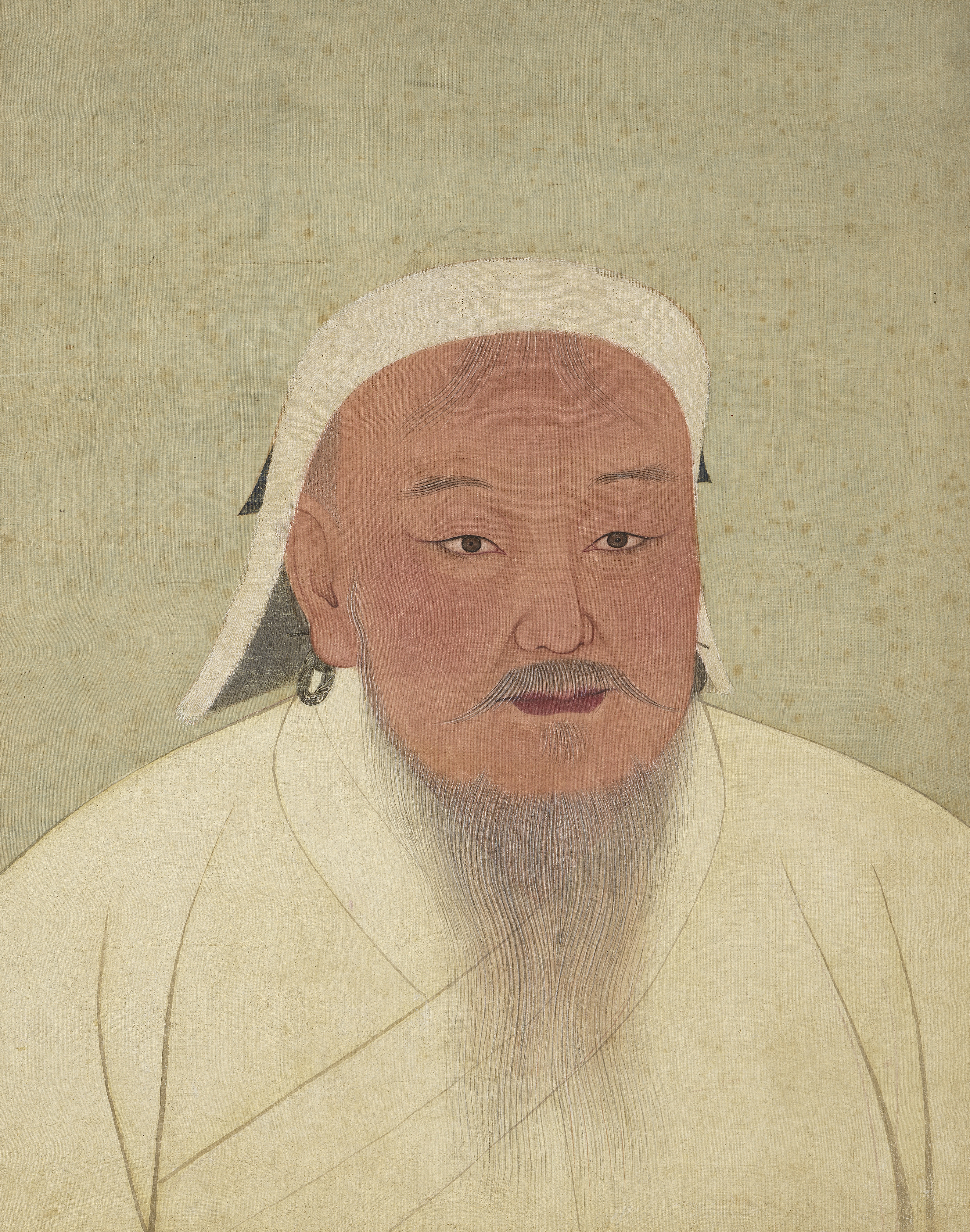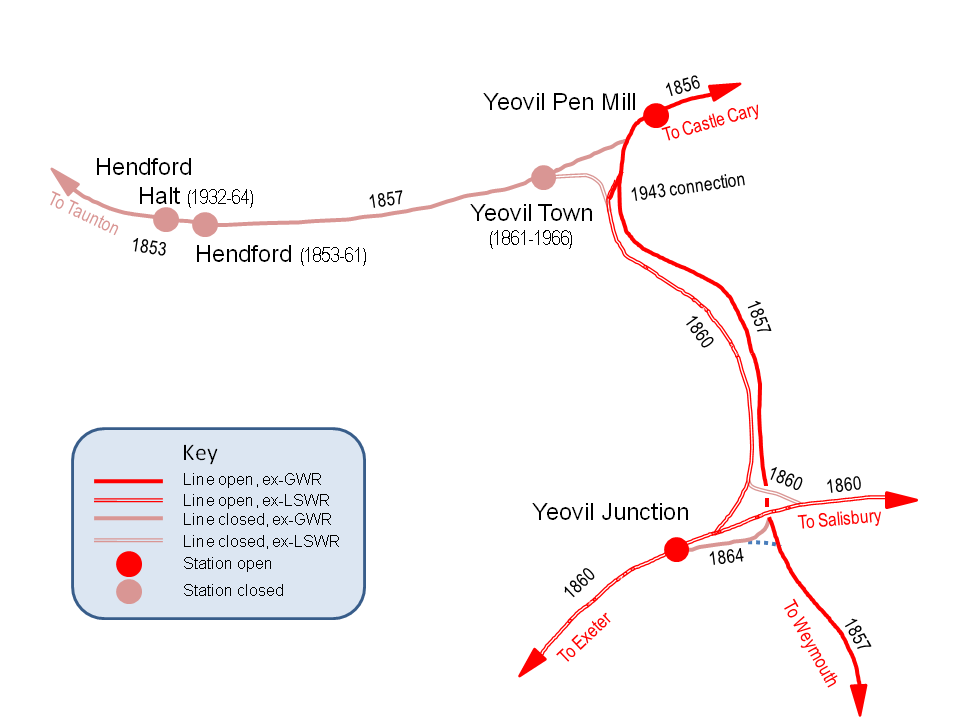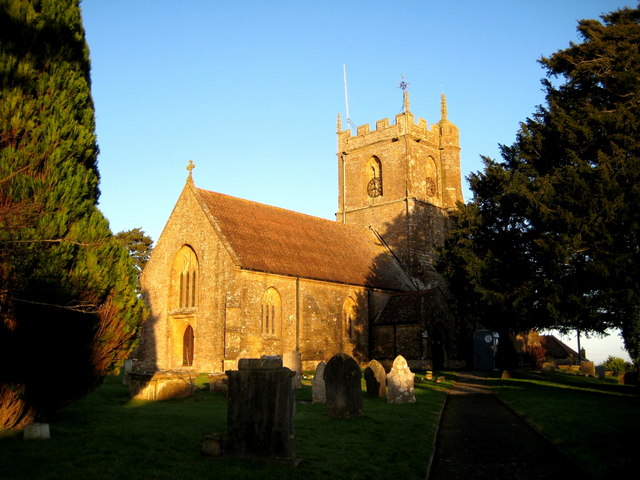|
St Andrew's Church, Brympton
The Church of St Andrew in Brympton, Somerset, England, dates from the 13th century and has been designated as a Grade I listed building. It is closely associated with the manor house of Brympton d'Evercy. The d'Evercy family were responsible for building the church. Thomas d'Evercy purchased the estate in 1220. Sir Peter founded a chantry at Brympton d'Evercy in 1306, endowing a priest with a messuage and in the parish. New aisles were added in 1469. It has been suggested that this is the building today known as the priest house, but no structural evidence exists to support this claim. The church contains monuments to Sir John Sydenham (died 1626) and his family who were lords of the manor. Some of the effigies within the church were originally in the churchyard but were moved into the church in the 19th century and restored by John Edward Carew. The parish is within the benefice of Odcombe with Brympton, Lufton and Montacute, which is within the deanery of Yeovil. S ... [...More Info...] [...Related Items...] OR: [Wikipedia] [Google] [Baidu] |
Brympton
Brympton is a civil parish and electoral ward in Somerset, England. The parish is situated on the north-west edge of Yeovil in the South Somerset district. The parish/ward has a population of 7,308. The civil parish covers the western part of the Yeovil built up area, including the stadium of Yeovil Town F.C. at Huish Park, and also includes the hamlets of Brympton D'Evercy, Lufton, Thorne Coffin and Alvington as well as part of Chilthorne Domer. History An important late Roman villa was excavated at Lufton by Leonard Hayward of Yeovil Grammar School during the 1950s and 1960s. Further work on this villa and its landscape was undertaken by archaeologists from Newcastle University between 2012 and 2017. The villa is a corridor building with an unusual octagonal plunge bath. A number of mosaics were found, including one around the octagonal pool depicting fish. Brympton, historically spelt Brimpton, was an ancient parish, part of the Stone Hundred. The parish included the h ... [...More Info...] [...Related Items...] OR: [Wikipedia] [Google] [Baidu] |
Church Of England Church Buildings In South Somerset
Church may refer to: Religion * Church (building), a building for Christian religious activities * Church (congregation), a local congregation of a Christian denomination * Church service, a formalized period of Christian communal worship * Christian denomination, a Christian organization with distinct doctrine and practice * Christian Church, either the collective body of all Christian believers, or early Christianity Places United Kingdom * Church (Liverpool ward), a Liverpool City Council ward * Church (Reading ward), a Reading Borough Council ward * Church (Sefton ward), a Metropolitan Borough of Sefton ward * Church, Lancashire, England United States * Church, Iowa, an unincorporated community * Church Lake, a lake in Minnesota Arts, entertainment, and media * '' Church magazine'', a pastoral theology magazine published by the National Pastoral Life Center Fictional entities * Church (''Red vs. Blue''), a fictional character in the video web series ''Red vs. Blue'' * Chur ... [...More Info...] [...Related Items...] OR: [Wikipedia] [Google] [Baidu] |
13th-century Church Buildings In England
The 13th century was the century which lasted from January 1, 1201 ( MCCI) through December 31, 1300 ( MCCC) in accordance with the Julian calendar. The Mongol Empire was founded by Genghis Khan, which stretched from Eastern Asia to Eastern Europe. The conquests of Hulagu Khan and other Mongol invasions changed the course of the Muslim world, most notably the Siege of Baghdad (1258), the destruction of the House of Wisdom and the weakening of the Mamluks and Rums which, according to historians, caused the decline of the Islamic Golden Age. Other Muslim powers such as the Mali Empire and Delhi Sultanate conquered large parts of West Africa and the Indian subcontinent, while Buddhism witnessed a decline through the conquest led by Bakhtiyar Khilji. The Southern Song dynasty would begin the century as a prosperous kingdom but would eventually be invaded and annexed into the Yuan dynasty of the Mongols. The Kamakura Shogunate of Japan would be invaded by the Mongols. Goryeo resiste ... [...More Info...] [...Related Items...] OR: [Wikipedia] [Google] [Baidu] |
List Of Ecclesiastical Parishes In The Diocese Of Bath And Wells
The ecclesiastical parishes within the Diocese of Bath and Wells cover the majority of the ceremonial counties of England, English county of Somerset and small areas of Devon, Dorset, Gloucestershire and Wiltshire. The cathedra, episcopal seat of the Bishop of Bath and Wells is in the Wells Cathedral, Cathedral Church of Saint Andrew in the city of Wells, Somerset, Wells in Somerset. The diocesan offices, the bishops' offices and residences and the cathedral are all located around the Bishop's Palace, Wells, Bishop's Palace in Wells. The diocese is not referred to as "Bath diocese" or "Wells diocese", but as "Bath and Wells diocese". The ordinary of the diocese is the diocesan Bishop of Bath and Wells, Peter Hancock; he is assisted throughout the diocese by the Bishop of Taunton, Bishop suffragan of Taunton, Ruth Worsley. Her See was created in 1911. Alternative episcopal oversight (for parishes in the diocese that reject the ministry of women priests) is provided by the provi ... [...More Info...] [...Related Items...] OR: [Wikipedia] [Google] [Baidu] |
List Of Somerset Towers
The Somerset towers, church towers built in the 14th to 16th centuries, have been described as among England's finest contributions to medieval art. The paragraphs and descriptions below describe features of some of these towers. The organization follows Peter Poyntz-Wright's scheme for grouping the towers by what he understands to be roughly the date and group of mason-architects who built them. Poyntz-Wright's scheme came under criticism in the 1980s. Churchill generation These churches have smaller towers with a single window in each face of the top stage; a pierced top parapet without merlons and four square-set corner pinnacles above. Cheddar generation These churches have three windows in each face of the top stage; diagonal buttressing; some with squareset corner pinnacles; some with buttress pinnacles. These range from simple to elaborate designs: (Bleadon, shortly ''before 1390''; Brent Knoll, about ''1397''; Mark, about ''1407''; Weare, about ''1407''; Banwell, abo ... [...More Info...] [...Related Items...] OR: [Wikipedia] [Google] [Baidu] |
Grade I Listed Buildings In South Somerset
South Somerset is a local government district in the English county of Somerset. The South Somerset district occupies an area of , stretching from its borders with Devon and Dorset to the edge of the Somerset Levels. The district has a population of about 158,000, and has Yeovil as its administrative centre. In the United Kingdom, the term listed building refers to a building or other structure officially designated as being of special architectural, historical or cultural significance; Grade I structures are those considered to be "buildings of exceptional interest". Listing was begun by a provision in the Town and Country Planning Act 1947. Once listed, severe restrictions are imposed on the modifications allowed to a building's structure or its fittings. In England, the authority for listing under the Planning (Listed Buildings and Conservation Areas) Act 1990 rests with Historic England, a non-departmental public body sponsored by the Department for Digital, Culture, Media a ... [...More Info...] [...Related Items...] OR: [Wikipedia] [Google] [Baidu] |
Yeovil
Yeovil ( ) is a town and civil parishes in England, civil parish in the district of South Somerset, England. The population of Yeovil at the last census (2011) was 45,784. More recent estimates show a population of 48,564. It is close to Somerset's southern border with Dorset, from London, south of Bristol, from Sherborne and from Taunton. The aircraft and defence industries which developed in the 20th century made it a target for bombing in the Second World War; they are still major employers. Yeovil Country Park, which includes Ninesprings, is one of several open spaces with educational, cultural and sporting facilities. Religious sites include the 14th-century Church of St John the Baptist, Yeovil, Church of St John the Baptist. The town is on the A30 road, A30 and A37 road, A37 roads and has two railway stations. History Archaeological surveys have yielded Palaeolithic burial and settlement sites mainly to the south of the modern town, particularly in Hendford, where a ... [...More Info...] [...Related Items...] OR: [Wikipedia] [Google] [Baidu] |
Montacute
Montacute is a village and civil parishes in England, civil parish in Somerset, England, west of Yeovil. The village has a population of 831 (2011 census). The name Montacute is thought by some to derive from the Latin "Mons Acutus", referring to the conically acute St Michael's Hill dominating the village to the west. An alternative view is that it is named after Drogo de Montagu, whose family originated from Montaigu-les-Bois, in the arrondissement of Coutances. Mortain held Montacute after 1066, Drogo was a close associate. The village is built almost entirely of the local hamstone. From the 15th century until the beginning of the 20th century it formed the heart of the Estate (land), estate of the Phelips family of Montacute House. The village has a fine Middle Ages, medieval Church (building), church, and was the site of a Cluniac Reforms, Cluniac priory, the gatehouse of which is now a private house. At the centre of the village is a large Town square, square known as t ... [...More Info...] [...Related Items...] OR: [Wikipedia] [Google] [Baidu] |
Odcombe
Odcombe is a village and civil parish in south Somerset, England, west of the town of Yeovil, with a population of 759 in 2011. The upper part of the village, Higher Odcombe, sits on the crest of the hill, while the lower part, Lower Odcombe, is built on its northern slopes. Odcombe falls within the Yeovil (UK Parliament constituency), Yeovil Parliamentary constituency and is covered by the Non-metropolitan district of South Somerset, which was formed on 1 April 1974 under the Local Government Act 1972, having previously been part of Yeovil Rural District. There is a Parish councils of England, parish council which has responsibility for local issues. History The village is mentioned in the Domesday book when it was owned by Robert, Count of Mortain. After the Battle of Hastings in 1066, the Barony of Odcombe was given to Ansgar de Brito (formerly Ansgar de Montacute/Ansgar Deincourt) for valor in battle. Along with the Odcombe Barony, Ansgar de Brito acquired multiple addition ... [...More Info...] [...Related Items...] OR: [Wikipedia] [Google] [Baidu] |
Somerset
( en, All The People of Somerset) , locator_map = , coordinates = , region = South West England , established_date = Ancient , established_by = , preceded_by = , origin = , lord_lieutenant_office =Lord Lieutenant of Somerset , lord_lieutenant_name = Mohammed Saddiq , high_sheriff_office =High Sheriff of Somerset , high_sheriff_name = Mrs Mary-Clare Rodwell (2020–21) , area_total_km2 = 4171 , area_total_rank = 7th , ethnicity = 98.5% White , county_council = , unitary_council = , government = , joint_committees = , admin_hq = Taunton , area_council_km2 = 3451 , area_council_rank = 10th , iso_code = GB-SOM , ons_code = 40 , gss_code = , nuts_code = UKK23 , districts_map = , districts_list = County council area: , MPs = * Rebecca Pow (C) * Wera Hobhouse ( LD) * Liam Fox (C) * David Warburton (C) * Marcus Fysh (C) * Ian Liddell-Grainger (C) * James Heappey (C) * Jacob Rees-Mogg (C) * John Penrose (C) , police = Avon and Somerset Police ... [...More Info...] [...Related Items...] OR: [Wikipedia] [Google] [Baidu] |
Benefice
A benefice () or living is a reward received in exchange for services rendered and as a retainer for future services. The Roman Empire used the Latin term as a benefit to an individual from the Empire for services rendered. Its use was adopted by the Western Church in the Carolingian, Carolingian Era as a benefit bestowed by the crown or church officials. A benefice specifically from a church is called a precaria (pl. ''precariae)'', such as a stipend, and one from a monarch or nobleman is usually called a fief. A benefice is distinct from an allodial title, allod, in that an allod is property owned outright, not bestowed by a higher authority. Roman Catholic Church Roman imperial origins In ancient Rome a ''benefice'' was a gift of land (precaria) for life as a reward for services rendered, originally, to the state. The word comes from the Latin language, Latin noun ''beneficium'', meaning "benefit". Carolingian Era In the 8th century, using their position as Mayor of the Pa ... [...More Info...] [...Related Items...] OR: [Wikipedia] [Google] [Baidu] |
.jpg)





